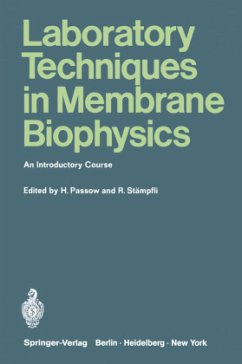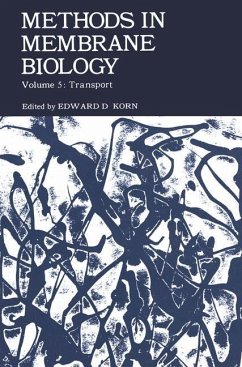
Red Cell Membrane Transport in Health and Disease
Versandkostenfrei!
Versandfertig in 1-2 Wochen
153,99 €
inkl. MwSt.

PAYBACK Punkte
77 °P sammeln!
The red cell has been a focus for scientific and medical investigation since the ear liest times. A higher erythrocyte sedimentation rate was associated with diseases (usually pyrexias) before the thermometer was invented. Furthermore, ever since the early observers Swammerdam and Leeuvenhoek saw discrete corpuscles in samples of blood using the first microscopes, there has been a significant scientific interest in the structure and function of red blood cells. The later discovery that red cells were not spherical, but biconcave discs introduced a scientific puzzle which is still not completel...
The red cell has been a focus for scientific and medical investigation since the ear liest times. A higher erythrocyte sedimentation rate was associated with diseases (usually pyrexias) before the thermometer was invented. Furthermore, ever since the early observers Swammerdam and Leeuvenhoek saw discrete corpuscles in samples of blood using the first microscopes, there has been a significant scientific interest in the structure and function of red blood cells. The later discovery that red cells were not spherical, but biconcave discs introduced a scientific puzzle which is still not completely resolved today, and identified the need for a detailed knowledge of the plasma membrane composition and structure, and its interaction with the cytoskeleton. Important concepts like the lipid bilayer, together with its more recent refinement as asymmetric in phospholipid composition led to the identification of translocases involved in actively maintaining its composition. Understanding the mechanics of red cell deformation as these biconcave discs traverse capillaries was advanced by the pioneering work of Rand and Burton in the Sixties, and progressed by Evans, Skalak and others. Based on the bilayer couple hypothesis, the shape changes that are possible for a human red cell from echinocyte to stomatocyte were described by Sheetz and Singer in the Seventies in terms of alterations in the individual halves of the bilayer. Certain clinical condi tions are associated with obvious changes in red cell morphology.












